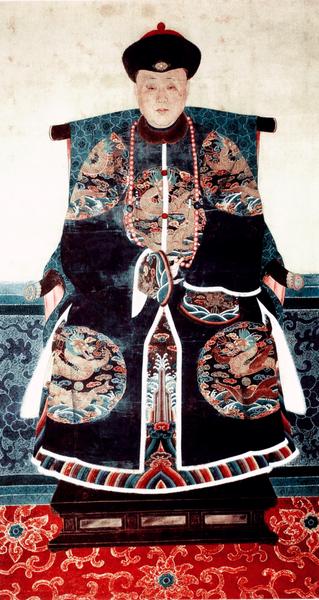
Kurun Princess Hexiao
| Name | Kurun Princess Hexiao |
| Title | princess of the Qing Dynasty (1775-1823) |
| Gender | Female |
| Birthday | 1775-02-02 |
| nationality | Qing dynasty |
| Source | https://www.wikidata.org/wiki/Q6447443 |
| pptrace | View Family Tree |
| LastUpdate | 2025-10-27T03:40:34.451Z |
Introduction
Princess Hexiao of the First Rank (2 February 1775 – 13 October 1823) was a member of the Manchu royal family during the Qing dynasty. She was the tenth and youngest daughter of the Qianlong Emperor and his consort, known as Consort Dun.
**Birth and Childhood**
Born in 1775, Princess Hexiao was born when the Qianlong Emperor was 63 years old. At that time, most of his other daughters had either died or married and left the palace. The birth of another daughter was considered a source of joy for the emperor. From childhood, she was described as resembling her father in appearance and was noted for her resolute character. She frequently accompanied the emperor on hunting expeditions.
**Title Elevation and Recognition**
Originally holding the title of "Princess of the Second Rank," she was granted the title of "Princess of the First Rank" due to her father's favor, a status typically reserved for daughters born to the empress. Consequently, she became known as Princess Hexiao of the First Rank.
**Marriage**
On 12 January 1790, Princess Hexiao married Fengšeninde of the Niohuru clan, a prominent Manchu family. Fengšeninde was born in 1775 and was the eldest son of Heshen, an official known for his influence and favor with the Qianlong Emperor. The marriage's dowry was 300,000 silver taels, notably higher than that of other daughters of the emperor. The couple had a son born between 1794 and 1796, who died young in 1798.
**Heshen’s Fall and Its Aftermath**
Heshen, Fengšeninde’s father, was arrested in 1799 shortly after the death of the Qianlong Emperor. He was accused of corruption and initially sentenced to death via slow slicing. However, the Jiaqing Emperor, successor to Qianlong, authorized Heshen to commit suicide in his residence, out of respect for Prime Minister Heshen’s daughter, Princess Hexiao. Heshen’s vast wealth was confiscated. The Jiaqing Emperor granted amnesty to Princess Hexiao and redistributed part of Heshen’s confiscated property to her. Fengšeninde lost his titles and privileges but was not otherwise harmed.
**Later Life**
In 1806, Fengšeninde was appointed as a military official in Uliastai by the Jiaqing Emperor. He fell ill after serving there and later returned to Beijing in 1810 upon Princess Hexiao’s request. The emperor granted Fengšeninde the title of "Duke of Jin." Fengšeninde died three months later in May 1810, leaving Princess Hexiao widowed. She subsequently raised her two daughters, both born from Fengšeninde’s concubine, who were eleven and five years old at the time of their father's death. The Imperial Household Department ensured her well-being, and she remained financially stable.
**Death**
Princess Hexiao died on 13 October 1823 during the reign of the Daoguang Emperor. Her funeral was paid for by the Imperial Household Department and cost approximately 5,000 silver taels.
**Portrayals in Media**
She has been portrayed in popular culture, notably by Ng Tsi-yin in the 1988 television series *The Rise and Fall of Qing Dynasty* and by Stephanie Ho in the 2018 series *Succession War*.
**References**
[Sources are not provided in the given text.]
Family Tree
Tap to expand more relatives